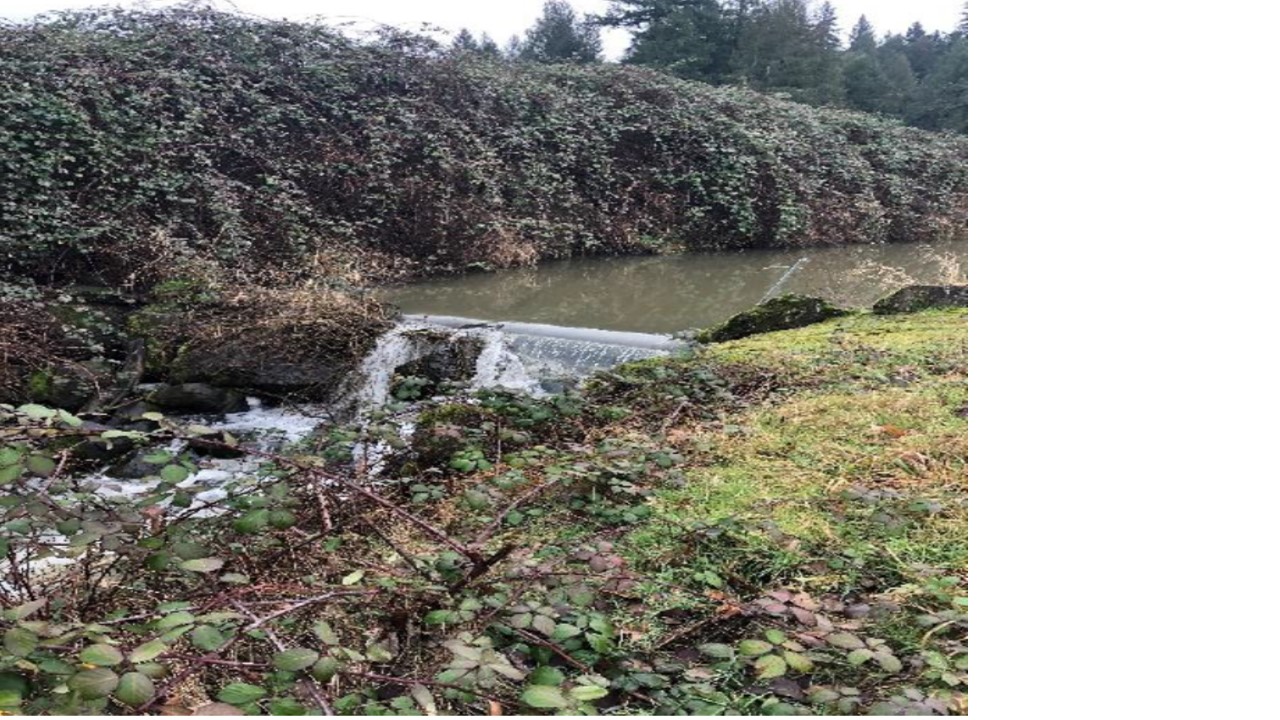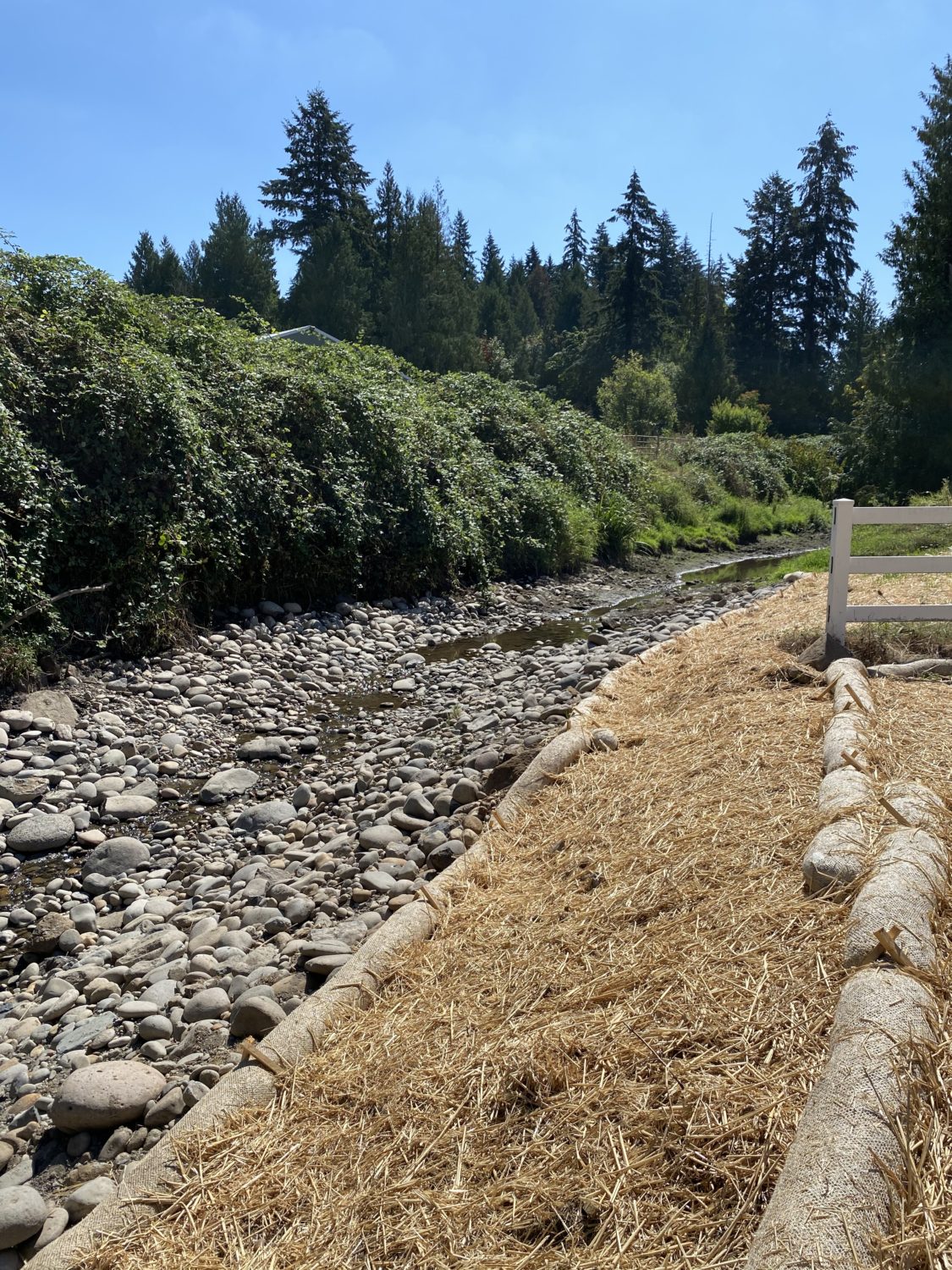At the end of April Johnson Creek Watershed Council staff headed out to Leach Botanical Garden in search of salmon. Well… salmon DNA. The goal of Johnson Creek’s eDNA program is to determine the effectiveness of fish passage projects by identifying the presence of four species of interest, coho salmon, chinook salmon, steelhead/rainbow trout, and Pacific lamprey, at former and future project sites and locations of interest.

“Environmental DNA or eDNA protocols allow for rapid, cost-effective, and standardized collection of data about species distribution and relative abundance. eDNA is nuclear or mitochondrial DNA that is released from an organism into the environment. Sources of eDNA include secreted feces, mucous, and gametes; shed skin and hair; and carcasses” (USGS). “For small, rare, secretive, and other species that are difficult to detect, such as salmon, eDNA provides an attractive alternative for aquatic inventory and monitoring programs” (USGS).
We sampled for eDNA at 10 sites throughout the watershed on Mitchell Creek, Kelley Creek, Badger Creek, and the mainstem and North Fork of Johnson Creek. Sampling occurs twice a year, in April for juvenile detection and in October/November for adult/spawning detection.
The results for our April testing came back with positive results for Pacific lamprey, rainbow trout/steelhead, and coho salmon! A positive result for a species doesn’t necessarily mean that the eDNA originated in that location, it could have flowed downstream from a location miles upstream! The positive result just indicates that the species of interest made it upstream to at least the sampling location. Note that steelhead salmon and rainbow trout are so similar that it’s not possible to tell the difference by eDNA testing.
- Pacific lamprey eDNA was found in the Johnson Creek mainstem at Leach Botanical Garden and along the Springwater Trail near SE Telford Road and SE 262nd Avenue.
- Rainbow trout / Steelhead eDNA was also found in the Johnson Creek mainstem along the Springwater Trail near SE Telford Rd and SE 262nd Ave, as well as at East Multnomah Soil and Water Conservation District’s Headwaters Farm in outer Gresham. eDNA was also found in Badger Creek along the Springwater Trail near SE Telford Road and SE 267th Avenue, and at a new fish passage project site a little ways upstream.
- Coho salmon eDNA was found in Kelley Creek at the location where we removed a small dam in 2020!

These results help us to determine if previous fish passage projects have successfully opened up stream habitat for migratory fish and determine what species are present at potential future fish passage and habitat enhancement projects. Finding Pacific lamprey and rainbow trout eDNA along the Springwater Trail in Boring is motivating because we are currently working to develop a couple fish passage barrier removal projects near those sampling sites. Since the Leach Botanical Garden is our most downstream sampling location this year, all of the migratory species we found upstream passed by the Garden. This is especially exciting because we are currently developing a project to enhance salmon habitat by adding large wood to the streambanks of the Leach Back 5 restoration area. Lastly, it’s always so encouraging to have evidence that previous projects are successfully enhancing habitat. Finding coho salmon eDNA where less than two years ago a dam used to be present on Kelley Creek inspires us to continue to remove barriers and enhance habitat.
For more information about our eDNA monitoring program, check out our Behind the Scenes article from May: https://www.jcwc.org/behind-the-scenes-edna-collection/
